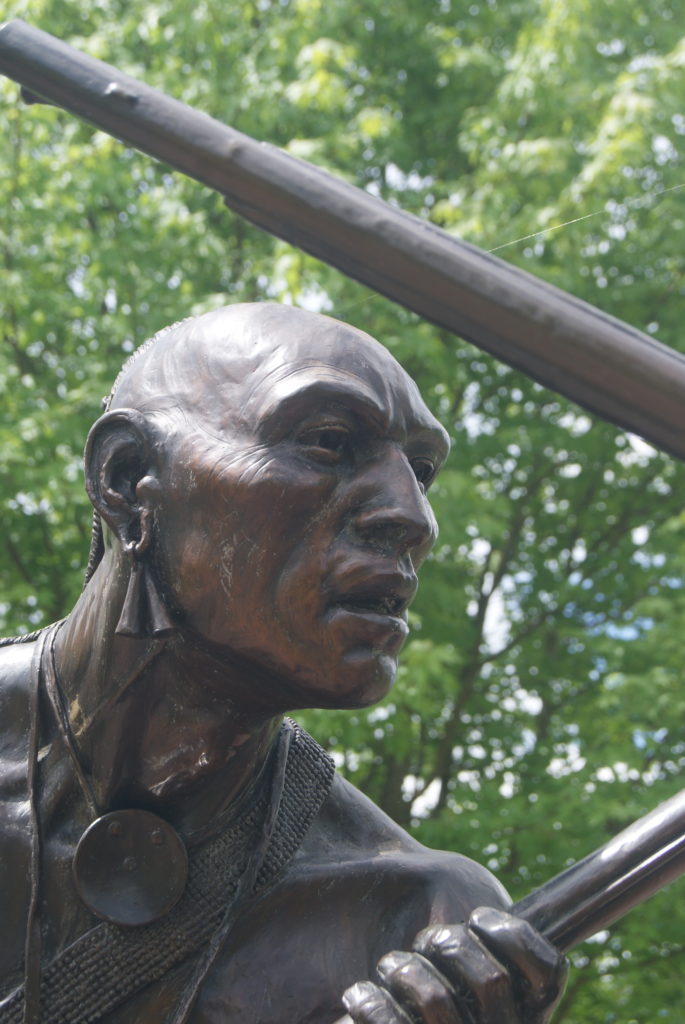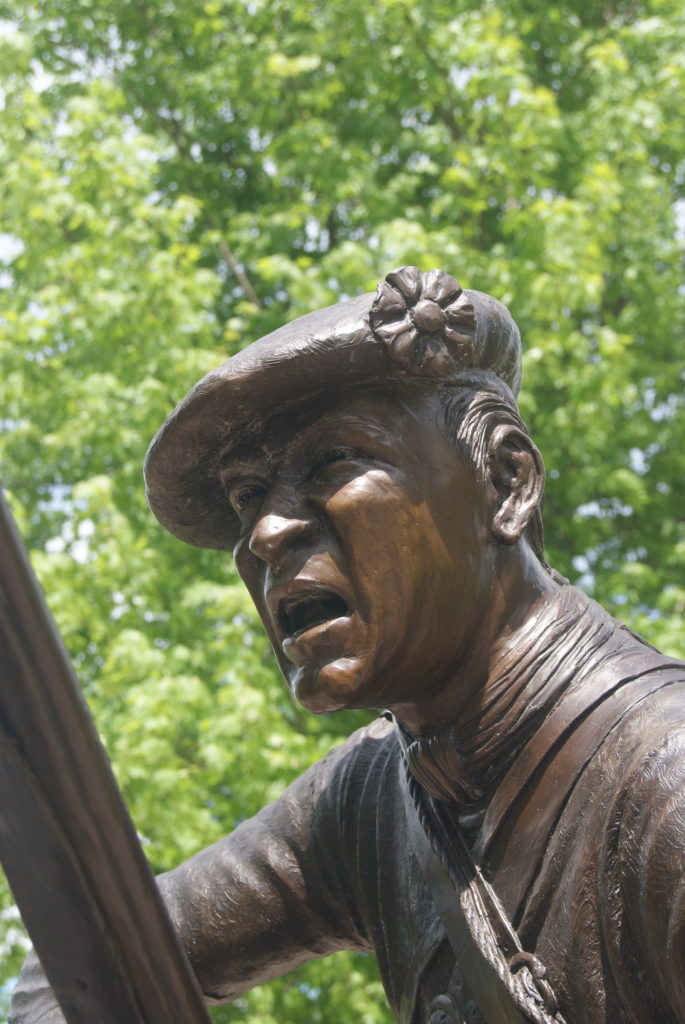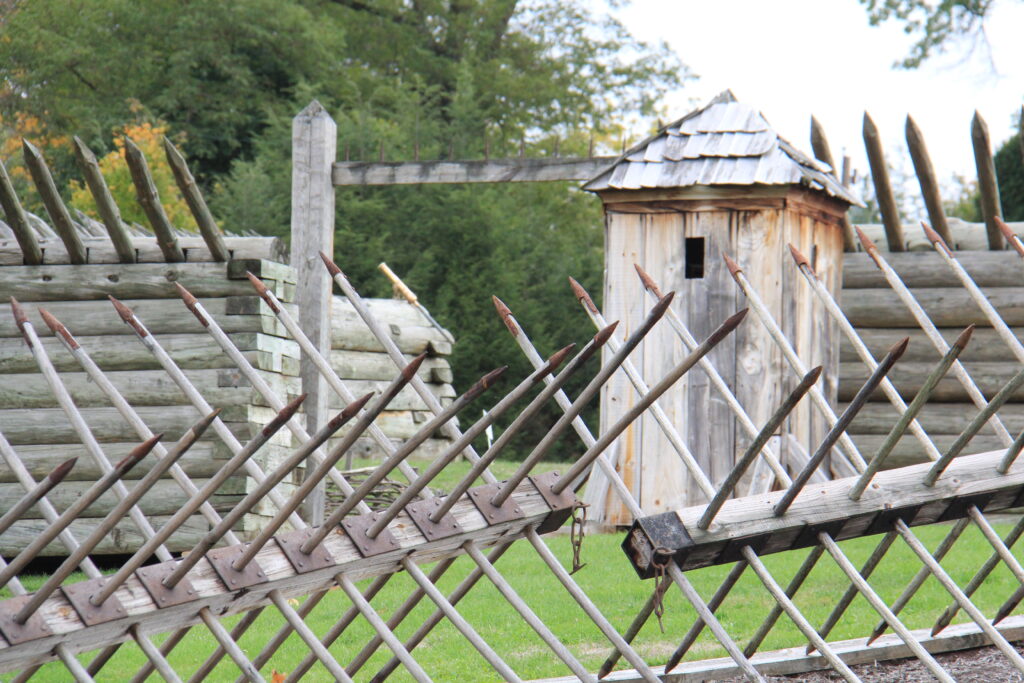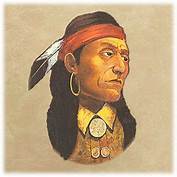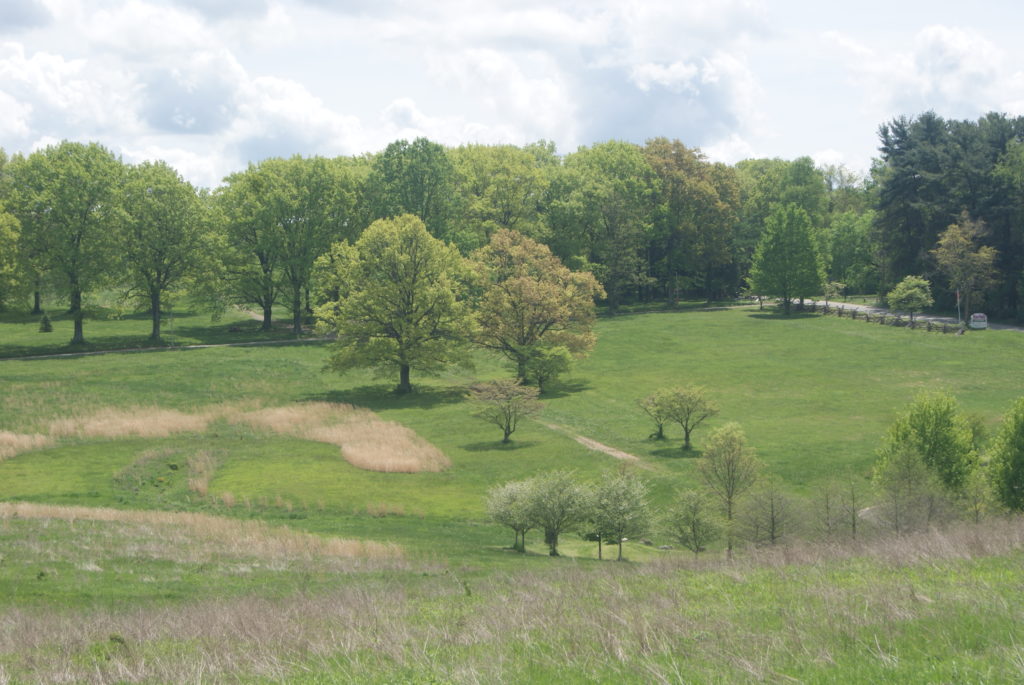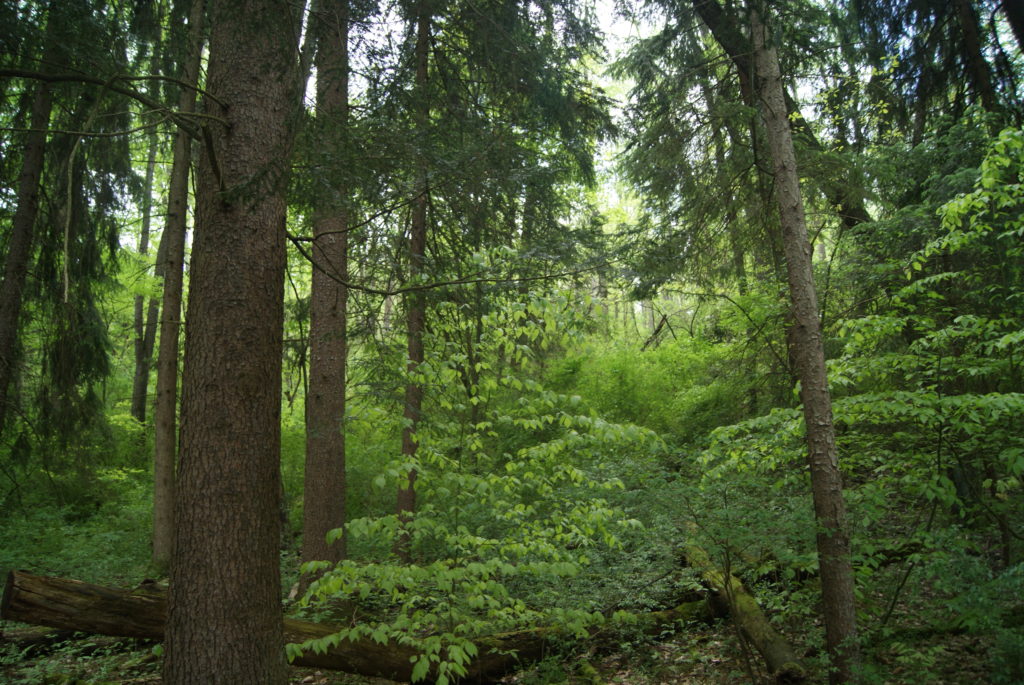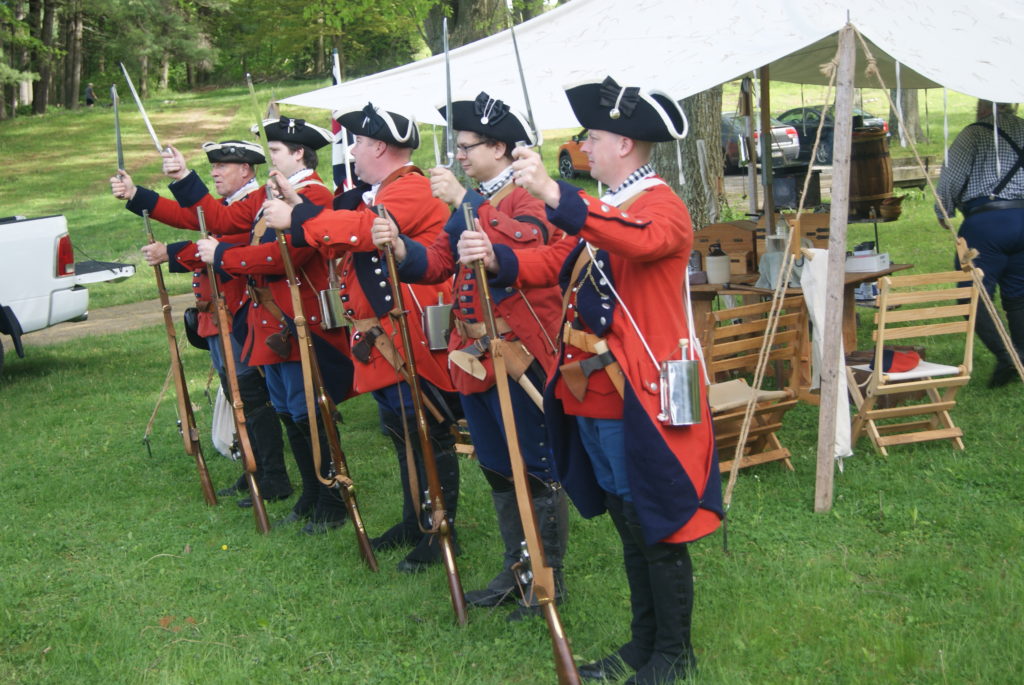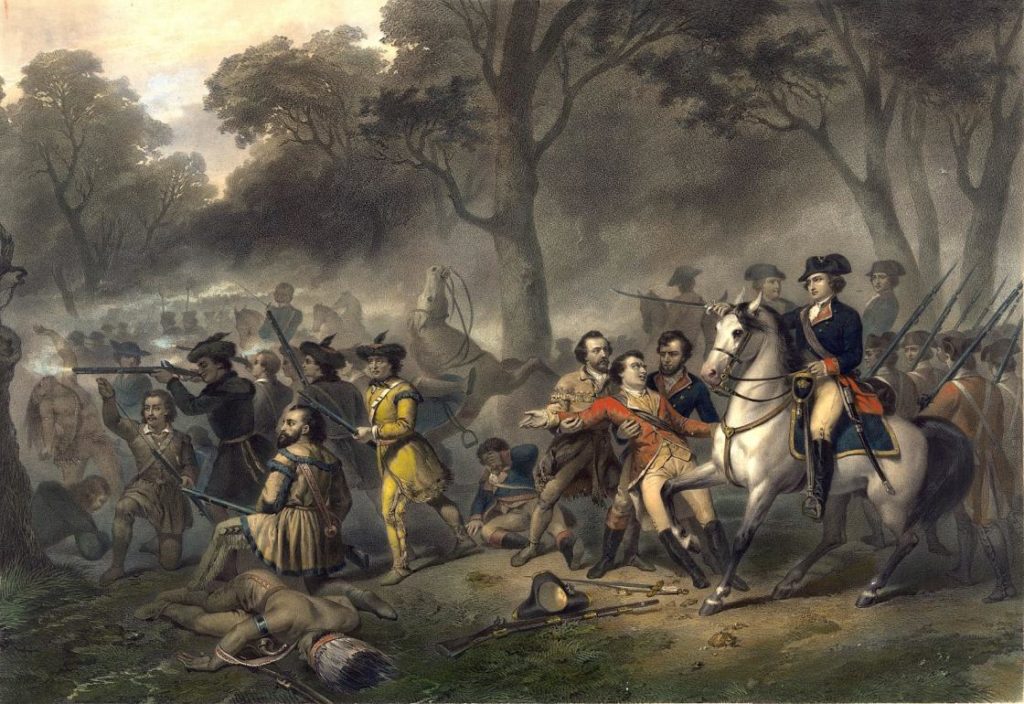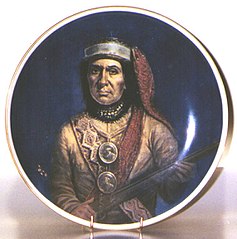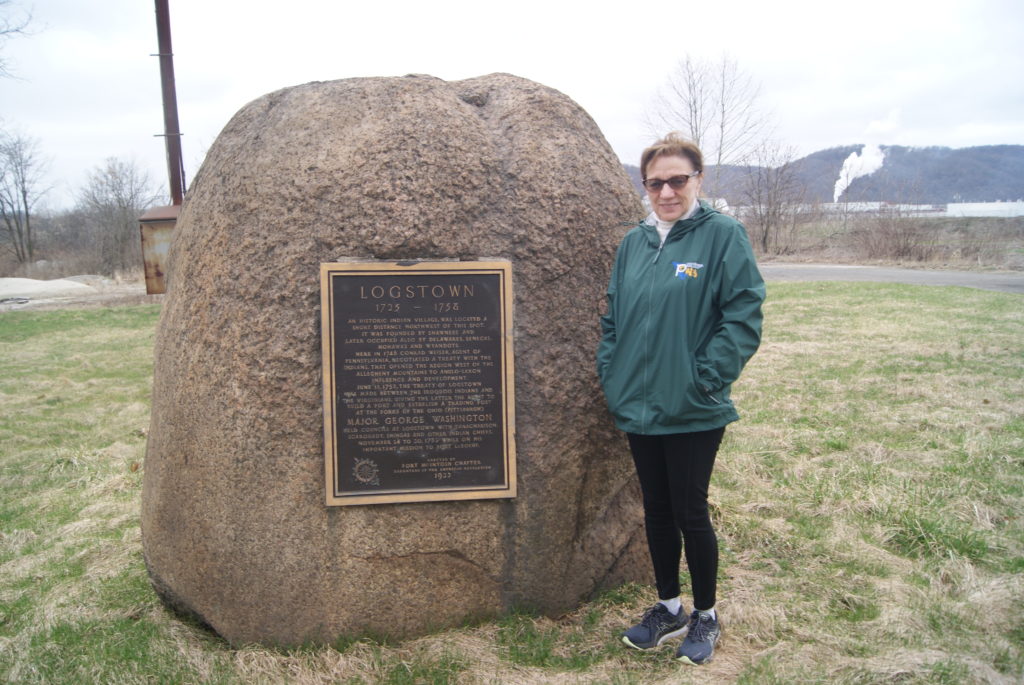Guyasuta was a signatory to the 1765 treaty between the Indians and the colonies of Pennsylvania and Virginia. The treaty allowed British forts in the Ohio Country, but no white settlers. He probably doubted from the start that the white settlers would respect the treaty’s terms. But I wonder if he expected to be betrayed by his Iroquois cousins.
Surprise! The White Men Break a Treaty
Eager white settlers, of course, continued to stream west into the Ohio Country. The Washington brothers, and other speculators, had succeeded in acquiring title to large tracts in what was ostensibly Indian country. So, the settlers were often squatters. By 1768, the 1765 treaty had become meaningless. Unsurprisingly, the Indians objected to the encroachments of the white settlers, and committed acts of violence. Then whites attacked Indians in retribution – very often, not the same Indians who had attacked them. By this time Guyasuta and Superintendent if Indian Affairs Johnson were actually allies. Both wanted to end the cycle of violence and retribution. Both had an interest in peace. But Johnson believed that the Mingo should fold back into the Iroquois Confederacy. He wanted only one Indian nation to deal with.
Colonial officials and Indians met again, this time at New York’s Fort Stanwix, to revise the boundaries of settlement. Present were Johnson, a few other colonial officials, and the leaders of the six nations of the Iroquois Confederacy. Notably absent: any representative of the Mingo, whom Johnson stubbornly saw as being represented by the Iroquois.
In the 1768 Treaty of Fort Stanwix, the Iroquois allowed the opening of all of southwestern Pennsylvania, West Virginia and Kentucky to white settlement.
Most of the Mingo from the ceded territory migrated to Ohio. Others stayed, and the bloodshed on both sides continued. Somewhat ironically, in 1770, George Washington visited Guyasuta’s hunting camp near where the Hocking River flows into the Ohio. He was seeking to buy more land.
Lord Dunmore’s War
Meanwhile, the white colonists grew restive. The British victory in the French & Indian War came at a very high financial cost. Naturally, the British government felt that some of that cost should be borne by the colonists themselves. But the colonists objected to the 1764 sugar tax and the 1765 stamp tax. In 1767, they objected again to the Townsend Duties on lead, glass, paint and tea. In 1770, violence erupted between civilians and British soldiers. The incident became known as the Boston Massacre.
When a nation is bitterly divided internally, someone always comes up with the idea of distracting the feuding sides by creating an external enemy. In 1774, the person who came up with the distraction was John Murray, fourth Earl of Dunmore, and the colonial governor of Virginia.
Indian versus settler violence had continued in West Virginia and Kentucky, both claimed by Virginia at that time. Lord Dunmore thought that a war against the Mingo and Shawnee would rally the colonials back to the mother country’s side. He also hoped to clear the Indians out of the area once and for all. And, even if he failed at both of those goals, a nice little war would weaken colonial military power.
Dunmore sent two columns toward the disputed territory. One column of 1000 colonials moved west from Virginia under Col. Andrew Lewis. Another 1000-man column moved south from Fort Pitt under Dunmore himself. Lewis was ambushed by 600 Ohioans under the Shawnee chief Cornstalk at Point Pleasant (or Tu-Endie-Wei, “point between the waters”). Despite being taken by surprise, the colonials won a victory because, by this time, they had learned to fight “Indian style.”
A New Treaty
Dunmore joined Lewis at Camp Charlotte, near modern-day Chillicothe, Ohio, to negotiate surrender terms with Cornstalk. The terms forced the Indians to turn over all the lands south of the Ohio river that they had won in the Treaty of Ft. Stanwix. In addition, Dunmore won Cornstalk’s promise that, in case of a war between the provincials and the mother country, the Mingo and Shawnee would remain neutral.
Guyasuta, now reconciled to the Iroquois nation, represented the nation in working out details of the peace treaty. He succeeded in negotiating the release of all prisoners from the Dunmore war, and affirmed the Indian promise of neutrality. Speaking for both the Iroquois and the Mingo, he vowed, “We will not suffer either the English or the Americans to march an army through our country.”
Not every Iroquois chief agreed with the neutrality position. Many young warriors wanted to take the British side should war break out between the white men. Guyasuta spent 1776 shuttling back and forth between the Indians and the white men at Forts Pitt and Niagara, trying to reassure the British army and maintain the neutral Indian position. But 1776 was a fateful year, and fateful events generally require men and women to choose sides.
American Revolution and Indian Civil War
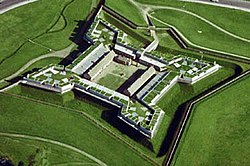
By 1777, neutrality had broken down. The Iroquois relied on British trade goods and believed that they would be more likely to lose their land if the Americans won. Also, in 1777 the British looked like a sure bet to win the war. Eventually even the champions of neutrality, Guyasuta and Cornplanter, sided with the British.
A Presbyterian minister named Samuel Kairland had lived among the Oneida and Tuscarora Indians for eight years and convinced them to take the American side. He assured them that the Americans would honor their land claims. These conflicting loyalties would soon lead to disaster for the Indians.
The Americans had occupied Fort Stanwix, forming an impediment to British General John Burgoyne’s goal of controlling the area between the St. Lawrence River and New York City. In August of 1777, Burgoyne sent a force under Lieutenant Colonel General Barry St. Leger to recapture the fort. St. Leger sent about 500 Seneca and Mohawk among his force to lay siege.
But their Oneida allies had warned the Americans of the coming attack, and they were prepared. A small army of Oneidas and Americans ambushed the besieging Mohawk and Seneca. A vicious hand-to-hand battle followed. One Seneca veteran later said, “The blood shed made a stream running down the sloping ground.”
The battle resulted in an official Iroquois civil war. Guyasuta and Cornplanter sent the bloody hatchet to the Oneida, and their allies attacked an Ottawa village. The Oneida attacked a Mohawk village in retaliation. Burgoyne’s campaign to gain control of the Mohawk valley had failed. But it had ignited a civil war that would fatally weaken the Iroquois nation.
Next time: Guyasuta’s life in the new American nations
Sources
Crytzer, Brady J. Guyasuta and the Fall of Indian America. Yardley, PA: Westholme Publishing, LCC, 2013.
https://military-history.fandom.com/wiki/Siege_of_Fort_Stanwix



